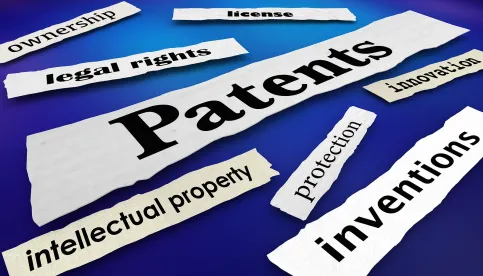In an appeal from the US Court of Federal Claims, the US Court of Appeals for the Federal Circuit affirmed a determination that 35 U.S.C. § 202(c)(4), a provision of the Bayh-Dole Act, operates to provide a license to the government for federally funded research based on work that occurred prior to the effective date of a funding agreement. University of South Fl. Board of Trustees v. United States, Case No. 22-2248 (Fed. Cir. Feb. 9, 2024) (Reyna, Taranto, Stoll, JJ.)
University of South Florida (USF) owns a now-expired patent directed to transgenic mice expressing a certain gene causing an accelerated pathology for Alzheimer’s disease. The patent’s subject matter was conceived while the two named inventors worked at USF, but both inventors transitioned their work to the Mayo Clinic prior to the first actual reduction to practice of the claimed invention. The mice remained at USF, under the care of USF professors, while the named inventors continued to oversee the project from Mayo. The first actual reduction to practice occurred while the inventors were at Mayo.
While the named inventors were still at USF, one inventor submitted a grant application to the National Institutes of Health (NIH). The NIH awarded the inventors (while they were still at USF) a grant covering the mouse project. After the inventors moved to Mayo but prior to the award grant, the designated grantee changed from USF to Mayo. In November 1997, Mayo and USF entered into a subcontract whereby Mayo would pay USF for grant-covered work occurring at USF.
USF sued the United States alleging infringement of the mouse patent by a third party with the government’s authorization and consent. The third party was producing and using mice covered by the patent for the government. The US asserted a license defense under the Bayh-Dole Act, which gives the government a license to practice certain federally funded inventions. The Claims Court granted judgment to the US under its license defense, determining that USF operated pursuant to an implied contract with Mayo based on the understanding that Mayo would use funding from the NIH grant to pay USF for work done there. The Claims Court therefore determined that USF was a contactor with an implied subcontract that was a funding agreement under Bayh-Dole. Since the invention was therefore invented by a government contractor operating under a funding agreement, it was a “subject invention” that was first actually reduced to practice under a government contract. Therefore, under Bayh-Dole, the government was entitled to a license. USF appealed, arguing that the invention was not a “subject invention” within the meaning of § 202(c)(4) of Bayh-Dole.
USF argued that to trigger § 202(c)(4), a funding agreement must be in place at the time of the relevant work and there was no implied agreement in April 1997, the time the work that led to the reduction to practice commenced. The Federal Circuit determined that the November 1997 subcontract was adequate to support entitlement to claim a government license under § 202(c)(4). In making this determination, the Court determined that USF received NIH funds from Mayo, pursuant to the November 1997 subcontract to pay for the April 1997 work and ongoing work. The Court further concluded that the April 1997 work leading to the first actual reduction to practice was the performance of work under a funding agreement.
The Federal Circuit reasoned that the original NIH grant was a funding agreement and therefore the November 1997 agreement between Mayo and USF, a subcontract for work under the NIH grant, was a funding agreement under the NIH grant.
USF argued that under Bayh-Dole there is a time-based requirement limitation and that to qualify as a “funding agreement” under § 202(c)(4), any agreement must be in place at the time the work is performed. The Federal Circuit rejected this timing contention, citing the statutory definition of a funding agreement as “any . . . subcontract of any type.”
The Federal Circuit noted that agreements contemplating payments for work performed before the effective date of the subcontract are “not uncommon,” and that a subcontract may provide for payment for work previously performed where it also contemplates payment for work yet to be done.




 />i
/>i

